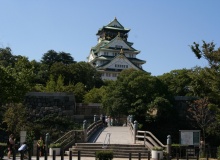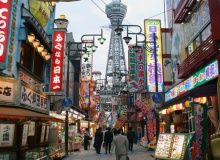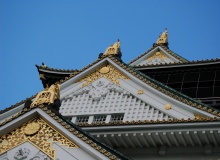Japan
A country with a rich sense of order and thousands of years of tradition
At Tokyo station, you can watch as everyone buys boxed lunches (obento in Japanese). The map on the covers suggest each of the foods inside had been harvested in a different part of Japan—white radishes from the far west, salmon roe from the far northeast, eel from the south coast. It could be considered the "Japan Sampler."
Japan itself has the same sense of order—each food in its own little compartment, carefully thought out and arranged.
It is also standardized, like the "salarymen" in their dark suits—yet, like their splashy ties, it had a container of sauce to spice things up. It is wrapped—everything in Japan gets wrapped. It even has a moist towelette—almost every restaurant gives you one. It is fairly expensive, too, which Japan can be if you don't plan well.
And although its packaging reflects modern design, it says nothing about the bold, exciting architecture that is slowly changing the face of Japan.
It is fascinating to watch as Japan struggles to merge its thousands of years of tradition with its present and future. So far, it has been able to do so with some mystery intact. The language barrier has helped, although that's slowly dissolving with bilingual signs and Japanese students learning English. For a while at least, the language, like Japan itself, will remain an intriguing challenge for visitors.
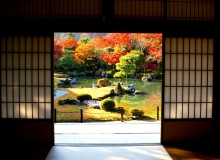
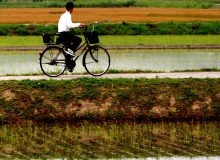
Tokyo
Tokyo presents a different view at every turn. It's one of the world's main economic centres, and its most populous agglomeration. The business of Tokyo is business, but you can still find harmony and small-scale gardens on back streets. Around the corner from neon and concrete, you may find the bonsai-lined courtyard of a traditional inn.
The streets are a confusing maze, so a map is essential. The transit system is excellent, however, and there are kobans (police boxes) throughout the metropolis, as well as a populace generally willing to help answer questions.
Because of the language barrier, most visitors to Tokyo are there on business, but there is plenty for leisure travellers to see. And despite its reputation, Tokyo doesn't have to be fearsomely expensive. With some planning, it's possible to visit Tokyo on a reasonable budget.
WHEN TO TRAVEL to Tokyo
Although Tokyo's busiest foreign-tourist season is summer, the city lends itself to visiting year-round. In fact, when the rest of Japan is besieged with holiday-mode Japanese during Golden Week (Apr 29-May 5) and summer holiday (mid-July through Aug), Tokyo can be blissfully empty, as Tokyoites pour out of the city to the countryside. Mid-February, hotel rooms may be in short supply as high-school students from around the nation converge on Tokyo to compete in entrance exams for the city's prestigious universities. And from the end of December through the first 3 or 4 days of January, it seems as though the entire nation shuts down, including most restaurants and museums.
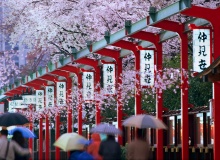
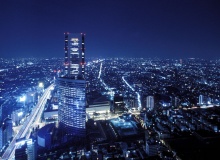
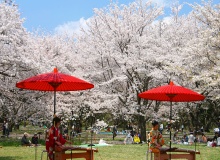
Kyoto
If you can visit only one city in Japan, Kyoto is the one. This ancient city still is considered the country's spiritual capital. Kyoto is graced with an abundance of temples, palaces, gardens and museums. If you're short on time, concentrate on three sites: the Golden Pavilion, Nijo Castle and the Kiyomizu Temple.
Among the many other stops you should make in Kyoto is the Nanzenji Temple, which has a pretty view of the city. From there, stroll down the Philosopher's Walk to the Ginkakuji, a pretty garden with a stylized version of Mount Fuji crafted from sand.
At night, stroll through Pontocho, the traditional nighttime entertainment spot. This narrow little street may be the most romantic street in Japan. You might even see a geisha scurrying to a theatrical performance or an assignation at a local bar.
If it fits your schedule, ride on the bullet train between Kyoto and Tokyo—it really is enjoyable.
WHEN TO TRAVEL to Kyoto
Weather-wise, spring and autumn are probably the best times to visit Kyoto, although they're also popular times for tourists and school groups. Summers (June-Aug) can be muggy but it’s still a nice time to be there. Holidays and festivals are celebrated with crowded gusto in Kyoto, so cherry-blossom season in April and Golden Week (late April/early May) are great times to be in the city.
Just as spring in Japan is associated with cherry blossom viewing, autumn is the season for watching the trees turn beautiful shades of red, gold and yellow.
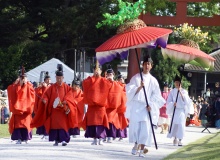
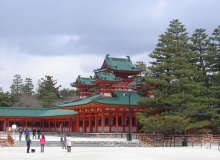
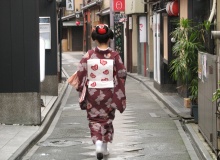
Osaka
The site of one of the earliest capitals of the country, Osaka remains a vital centre for trade and entrepreneurial culture. Tokyo may have political and financial clout and Kyoto may be the repository of ancient tradition, but Osaka is the nation's honest heartbeat.
In the mid-1990s, Osaka city officials embarked upon a long-term commitment to overhaul the city's grimy and nondescript image. The skyline has since risen dramatically, and so has its profile. Stylish high-rise apartment and office buildings are no longer an oddity. The architectural renaissance is bolstering Osaka's role as one of the world's most energetic cities. Indeed, it has a vibrancy that is seldom matched elsewhere in Japan.
The historic areas—the castle and the shrines—are modern reconstructions, but that cannot negate Osaka's long contribution to Japanese arts and culture. The tea ceremony, flower arrangement (ikebana) and the performing arts of Bunraku, Kabuki and Noh all have their roots in the city. Osaka is known for its writers, artists, musicians and comedians.
And so Osaka's true character lies in its people. Osakans have a reputation for being straightforward and even brash. They're hardworking but just as intent on having fun, and it is among them that the true appeal of this fascinating city can be found.
WHEN TO TRAVEL to Osaka
The best time to visit Osaka is during the seasons of spring and autumn. The Cherry Blossom Festival during spring and the autumn leaves or Koyo viewings during the autumn season are the prime attractions during the two seasons respectively.
